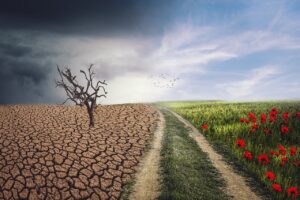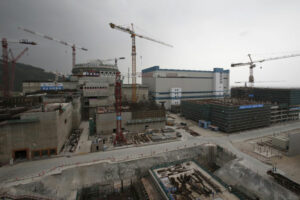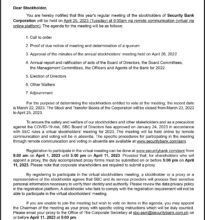How to ‘Build Better More’: attracting FDIs

(Part 2)
As we saw in the first article of this series, we should give our government some credit for presenting a very ambitious infrastructure spending program to be accomplished during the present Administration of President Ferdinand Marcos, Jr. The National Economic and Development Authority (NEDA) is targeting 3,600 potential infrastructure projects, large and small, worth as much a $372 billion for implementation through 2028.
It is worthwhile knowing what are the good intentions of our government officials. We must remember, however, that the road to hell is paved with good intentions. As the President himself has declared, it is not a walk in the park to convert pledges or promises to invest — especially from business enterprises from abroad — into actual spending.
The efforts of the Government, especially through such agencies as the Board of Investments (BoI) and the newly constituted Office of Presidential Adviser for Investment and Economic Affairs headed by Frederick D. Go, must be strongly supported by the private sector — business, NGOs, and academe. From past experiences under former Administrations, I have found it effective for groups of private businesspeople — assisted by think tanks and chambers of commerce and industry — to organize roadshows in targeted countries where there is perceived interest among foreign investors to invest, especially long-term capital, in the Philippines.
These roadshows are especially effective if they are completely made up of private businesspeople and academics, without the participation of any government officials. The only role played by a government official in these roadshows consists of some welcoming remarks from the Philippine Ambassador to the country concerned. Government officials are usually expected to issue more propaganda than objective assessments of the prospects of investing in the Philippines. A related reason is that people from the private sector have the freedom to be forthright about weaknesses and limitations of government. They do not have to sugarcoat imperfect government institutions and policies, having the freedom to call a spade a spade. It then becomes more encouraging to prospective investors to know that despite some of the obstacles to investment in the country, profits can still be made by the companies represented in the roadshow.
Considering the present circumstances of the Philippine economy, these roadshows should target especially those countries that are well known for having world class infrastructure and, therefore, could be expected to have the world’s leading companies in the building of roads and bridges, tollways and skyways, railroad subways, power plants (especially using renewable energy), airports, seaports, telecom and water facilities. The Philippines is in a good position to attract these companies at this time because our transitioning from a low-middle income to a high-middle income economy — coupled with a young and growing population — will generate huge effective domestic demands for infrastructure of all types. In my list, these are countries like Japan, South Korea, Taiwan, and Spain.
Targeting Japan is a no brainer. There are already numerous Japanese infrastructure companies that have been involved in the building of such major infrastructure projects like the Metro Manila Subway, the North-South Commuter Railway Station, the Metro Rail Transit Line 3 (MRT-3) Rehabilitation Project, the LRT 1 Cavite Extension, the Central Luzon Line Expressway, the Davao City Bypass Construction, the Cebu Mactan Bridge, and Coastal Road Construction and many others. The Japanese companies involved were Marubeni, Tokyo Gas, Hitachi Asia Ltd., Sumitomo, Kaima, Daito Kogyo, Taokai Kogyo, Taisei Corp., etc. Korean Companies are not far behind: KEPCO, Net Gate Korea Corp. (telecom), Hanjin Heavy Industries and Construction Co., Seohyun Energy, CNNET Co. Ltd., Aji Corp., G-S E& C, K-Water, Daelim Engineering & Construction, Suosung Engineering Co., and CJ Hunan Tech Co. Ltd. Taiwan — which has also some of the most impressive infrastructures in the Indo-Pacific region — has Tiger Infrastructure Philippines (telecom), Continental Engineering, CSBS Corp., and DB Tel.
As I will describe in the third article in this series, Spain was a top priority in my list.
Working with First Metro Bank Corp. and executive search firm Edistaff Builder, the University of Asia and the Pacific partnered with one of the leading business schools in the world, the IESE Business School, in organizing a series of roadshows in Spain (Madrid and Barcelona) last April 18 to 24. Spain was my first choice because I personally saw that European country transition from being a Third World economy in the 1960s and 1970s into First World status towards the end of the last century by implementing its own version of a Build, Build, Build program under the government of authoritarian leader Francisco Franco. I spent an academic year in Barcelona from 1963 to 1964 as a researcher at the IESE Business School after obtaining my Ph.D. in economics at Harvard University. I saw with my own eyes how infrastructure development was a major force in lifting Spain “from the bootstraps” as it could not expect any help from the allied forces after the Second World War because Franco supported Hitler, even if only indirectly.
Led by a group of very competent “technocrats” (that was the first time I heard this word), Spain rapidly modernized its infrastructures and thus spawned today’s world leading companies like ACS (Actividades de Construccion y Servicios), Acciona, OHLA, Iberderola, Terranova, IPSA, Cobra, Globaltec Inginieria, Elecnor, Abengoa, Ferrovlal, FCC (Fomento de Construcciones y Contratas), Aqualia, and Indra. Some of these are already very active in the Philippines such as Acciona and Indra. Hopefully, through the roadshow that we organized last April, many more of them can be convinced to bid for some of the infrastructure projects in the list of NEDA and help us become First World as they did themselves in the last century.
I must state, however, that to these countries I am targeting for roadshows in the immediate future — i.e., Spain, Japan, South Korea and Taiwan — we must add other developed countries that can help in our “Build Better More” program. For example, Denmark is a non-traditional partner of the Philippines in large-scale infrastructure projects. Recently, the Department of Energy announced that the Copenhagen Infrastructure New Markets Fund (CINMF), an affiliate of Danish fund manager Copenhagen Infrastructure Partners (CIP), is undertaking $5 billion worth of offshore wind projects in the Philippines, making it the country’s first 100% foreign owned offshore wind development. CINMF intends to complete this renewable energy project within the term of the Marcos Jr. administration. This project is already proof of the wisdom of the amendment of the Public Service Act (PSA) which finally opened up strategic infrastructure sectors to 100% foreign ownership.
To sweeten the pie, Ambassador Franz-Michael Mellbin, the Danish ambassador to the Philippines, announced recently that Danish nuclear technology company Seaborg is keen on bringing its know-how in small modular nuclear reactors to the Philippines as the country explores adding nuclear power into its energy mix. These modular reactors are the perfect answer to the energy needs of off-grid regions, especially islands, that can be instantly energized and converted into some of the most attractive destinations, as a Singaporean company called We Energy has already done in Palawan, the best resort island in the world.
The urgency in focusing a great deal of our attention and efforts in attracting all these foreign direct investments (FDIs)into our vital infrastructure sectors is my primary reason to dissuade some of our legislators from pursuing the move to amend our constitution on the pretext of further opening the economy to foreign direct investments. The only sectors still to be opened by constitutional amendment are advertising, media, education, and land ownership. These are not necessary in addressing our most pressing needs in infrastructure development and food security. For example, as I said in an interview with some journalists, large-scale investors in agribusiness ventures — as in the cases of banana and pineapple plantations — are not interested in owning land but are happy enough just leasing them. Also, the greatest challenge in improving the poor quality of education in the Philippines is at the basic education level, which will not be solved by allowing foreign educational institutions like Harvard, Oxford, or Cambridge to invest freely in Philippine schools.
Let us not distract the whole of Philippine society from solving the most urgent problems by a very divisive Cha-cha process.
(To be continued.)
Bernardo M. Villegas has a Ph.D. in Economics from Harvard, is professor emeritus at the University of Asia and the Pacific, and a visiting professor at the IESE Business School in Barcelona, Spain. He was a member of the 1986 Constitutional Commission.




